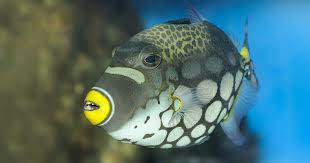Introduction
Whether you're an angler, marine biologist, or simply a nature lover, fish identification is a crucial skill. Correctly identifying fish species ensures sustainable fishing, compliance with regulations, and a deeper appreciation of aquatic ecosystems.
In this guide, we’ll explore:
-
Why fish identification matters
-
Key features for identifying fish
-
Best tools and apps for fish ID
-
Common freshwater and saltwater species
-
Tips for accurate identification
Let’s dive in!
Why Fish Identification is Important
Proper fish identification is essential for several reasons:
-
Legal Compliance – Fishing regulations often specify size limits, bag limits, and protected species. Misidentifying fish can lead to fines or harm endangered populations.
-
Conservation Efforts – Knowing which species are in decline helps anglers practice catch-and-release responsibly.
-
Safety – Some fish, like lionfish or pufferfish, are venomous and must be handled carefully.
-
Enhanced Fishing Experience – Identifying fish improves your knowledge and makes fishing more rewarding.
According to the National Oceanic and Atmospheric Administration (NOAA), over 30,000 fish species exist worldwide, making accurate identification both challenging and fascinating.
Key Features
To identify fish accurately, observe these characteristics:
1. Body Shape & Size
-
Flatfish (e.g., Flounder) – Laterally compressed, both eyes on one side.
-
Elongated (e.g., Eel) – Snake-like body.
-
Round (e.g., Bass) – Classic oval shape.
2. Fins and Tail Structure
-
Dorsal Fin – Number and shape (e.g., one long fin in trout vs. split in bass).
-
Tail (Caudal Fin) – Forked (tuna), rounded (catfish), or crescent-shaped (marlin).
3. Coloration & Markings
-
Stripes (e.g., Tigerfish) – Vertical or horizontal.
-
Spots (e.g., Trout) – Red, black, or white spots.
-
Iridescence (e.g., Opah) – Shiny, metallic hues.
4. Mouth Position
-
Superior (upturned) – Feeds at the surface (e.g., hatchetfish).
-
Terminal (forward-facing) – Generalist feeders (e.g., salmon).
-
Inferior (downward) – Bottom feeders (e.g., catfish).
5. Habitat & Behavior
-
Freshwater vs. Saltwater – Some species, like salmon, migrate between both.
-
Schooling vs. Solitary – Herring swim in schools, while pikes are solitary.
Best Tools & Apps for Fish Identification
Technology has madeidentification easier than ever. Here are top-rated tools:
| Tool | Features |
| FishVerify | AI-powered ID, regulations, and size limits. |
| iNaturalist | Crowdsourced species identification. |
| NOAA FishWatch | Official U.S. database on sustainable seafood. |
| Merlin Fish ID | Photo recognition for marine species. |
These apps help anglers quickly match fish to species using photos, location data, and expert databases.
Common Freshwater Fish Species
1. Largemouth Bass (Micropterus salmoides)
-
Identification: Olive-green body, dark lateral stripe, largemouth extending past the eye.
-
Habitat: Lakes, ponds, and slow rivers.
2. Rainbow Trout (Oncorhynchus mykiss)
-
Identification: Pink stripe along the side, black spots on back and tail.
-
Habitat: Cold streams and lakes.
3. Channel Catfish (Ictalurus punctatus)
-
Identification: Forked tail, whisker-like barbels, spotted sides.
-
Habitat: Muddy river bottoms.
Common Saltwater Fish Species
1. Atlantic Bluefin Tuna (Thunnus thynnus)
-
Identification: Metallic blue top, silver belly, crescent tail.
-
Habitat: Open ocean.
2. Clownfish (Amphiprioninae)
-
Identification: Bright orange with white stripes.
-
Habitat: Coral reefs (symbiotic with anemones).
3. Great Barracuda (Sphyraena barracuda)
-
Identification: Long, silver body with sharp teeth.
-
Habitat: Tropical reefs.
Tips for Accurate Fish Identification
-
Take Clear Photos – Capture fins, mouth, and markings.
-
Use a Field Guide – Books like Peterson Field Guide to Freshwater Fishes are invaluable.
-
Check Local Regulations – State wildlife agencies provide region-specific guides.
-
Join Online Communities – Forums like Reddit’s r/Fishing or iNaturalist offer expert help.
Conclusion
Mastering these identification enhances your fishing experience, supports conservation, and ensures legal compliance. By studying body shapes, colors, and habitats—and using modern tools—you can confidently identify species in any environment.
Ready to test your skills? Download a fish ID app and head to your nearest lake or coast!



